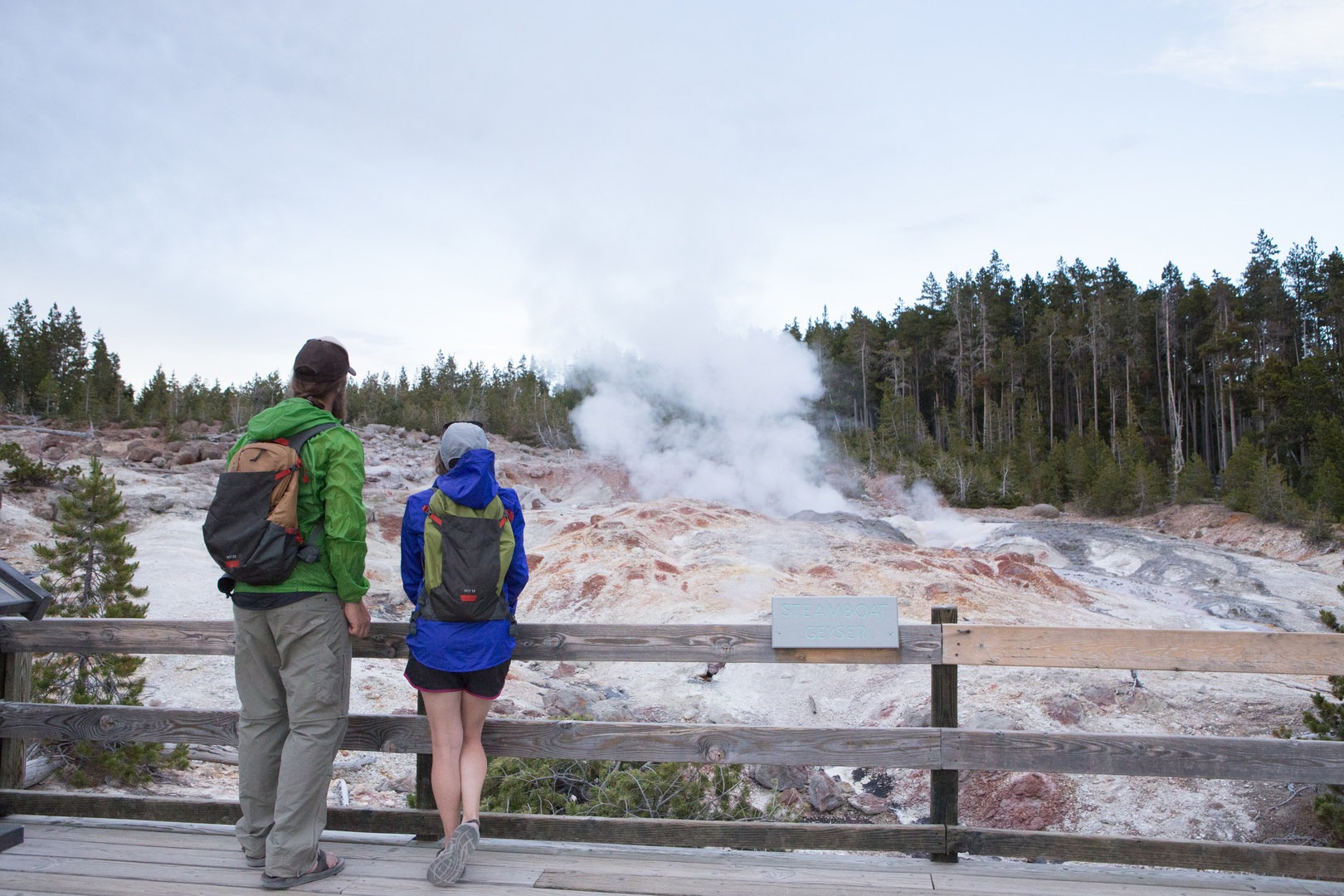Norris Geyser Basin is the hottest and fastest changing geyser basin In Yellowstone National Park. A short walk around a series of loops makes this a great place to spend some time taking in this unique geologic feature. If it is open, be sure to check out the Norris Geyser Basin Museum at the beginning of the hike. Rangers are on staff to answer questions and give educational talks about the geology and history of the area. Two basins make up the Norris Geyser area: Porcelain Basin and Back Basin.
Porcelain basin's creamy white color is the result of siliceous sinter mineral deposits carried to the surface by the basin's vast network of subsurface hot water. As the minerals spread, they clog existing vents. New vents form elsewhere where weaker layers in the crust give way. This phenomenon makes Porcelain Basin the fastest changing area in the park.
Back Basin's thermal features are more spread out amongst the thick lodgepole pine forests and the Tantalus Creek Basin. Back Basin hosts a large variety of thermal features. If you're lucky, you may get to witness the eruption of the world's largest geyser, Steamboat. Eruptions are rare, but a strong rumble hours beforehand will allude to an impending eruption, which sometimes reach heights of up to 400 feet. As the runoff from the geyser seeps across the basin you will notice hues of green and orange. This phenomenon is uniquely concentrated in the Norris Geyser Basin. Thermophiles, or microscopic algae, are present at different temperatures and serve as a natural thermometer. The orange thermophiles use iron deposits for their energy, allowing them to multiply by the trillions in water temperatures ranging from 122 to 140 degrees Fahrenheit, while the green channels filled with thermophilic algae indicate temperatures ranging from 100 to 130 degrees Fahrenheit.
The two loops can be walked in any direction, and both end up back at the museum. Even though the hike is short, its a good idea to allow a little extra time to take in abundant amount of features in Norris Geyser Basin.




























Comments
Sign In and share them.